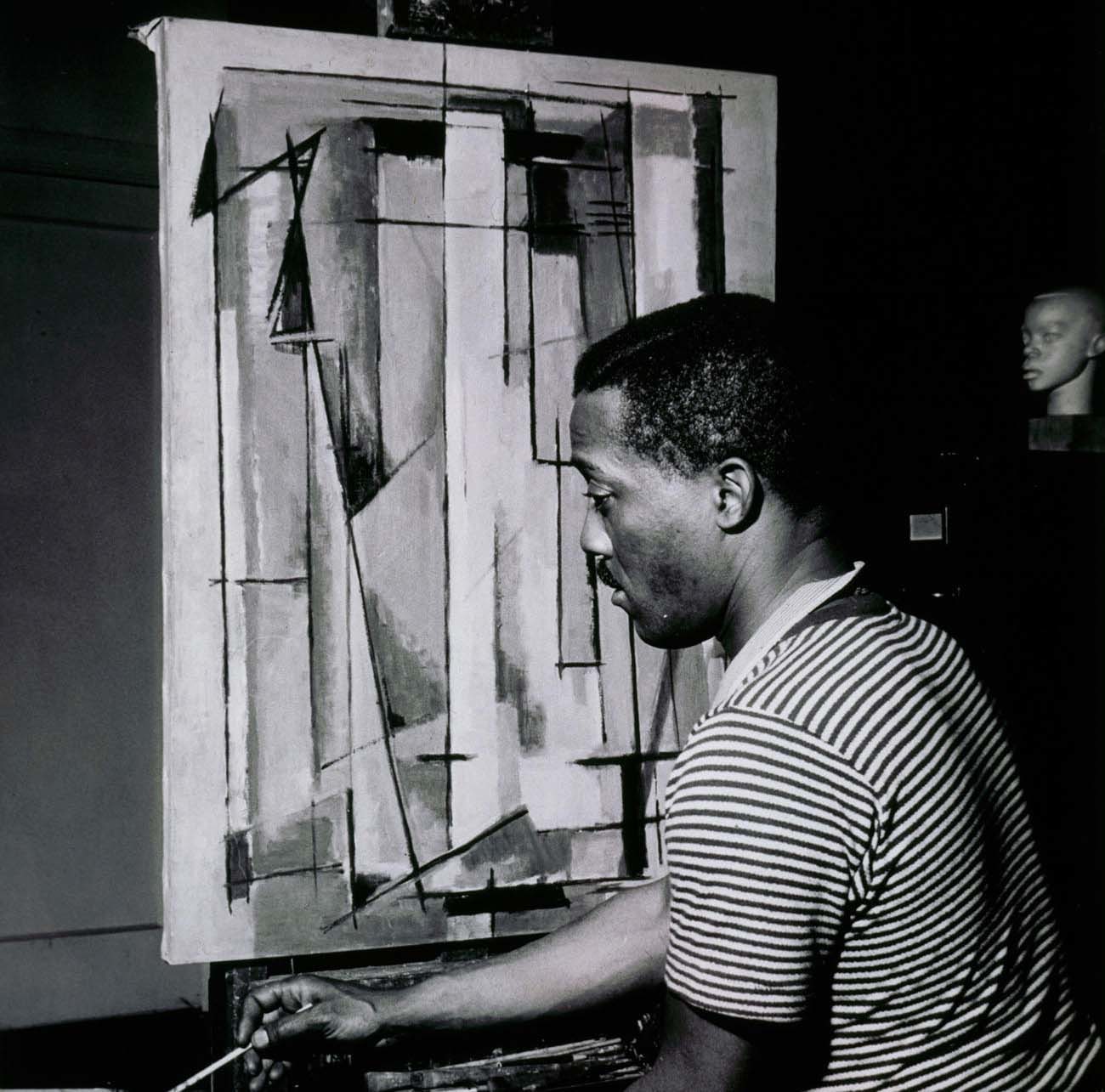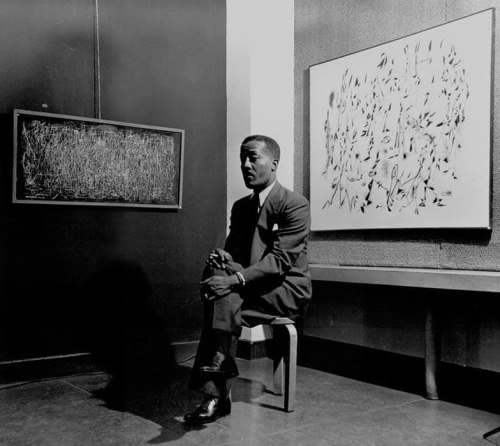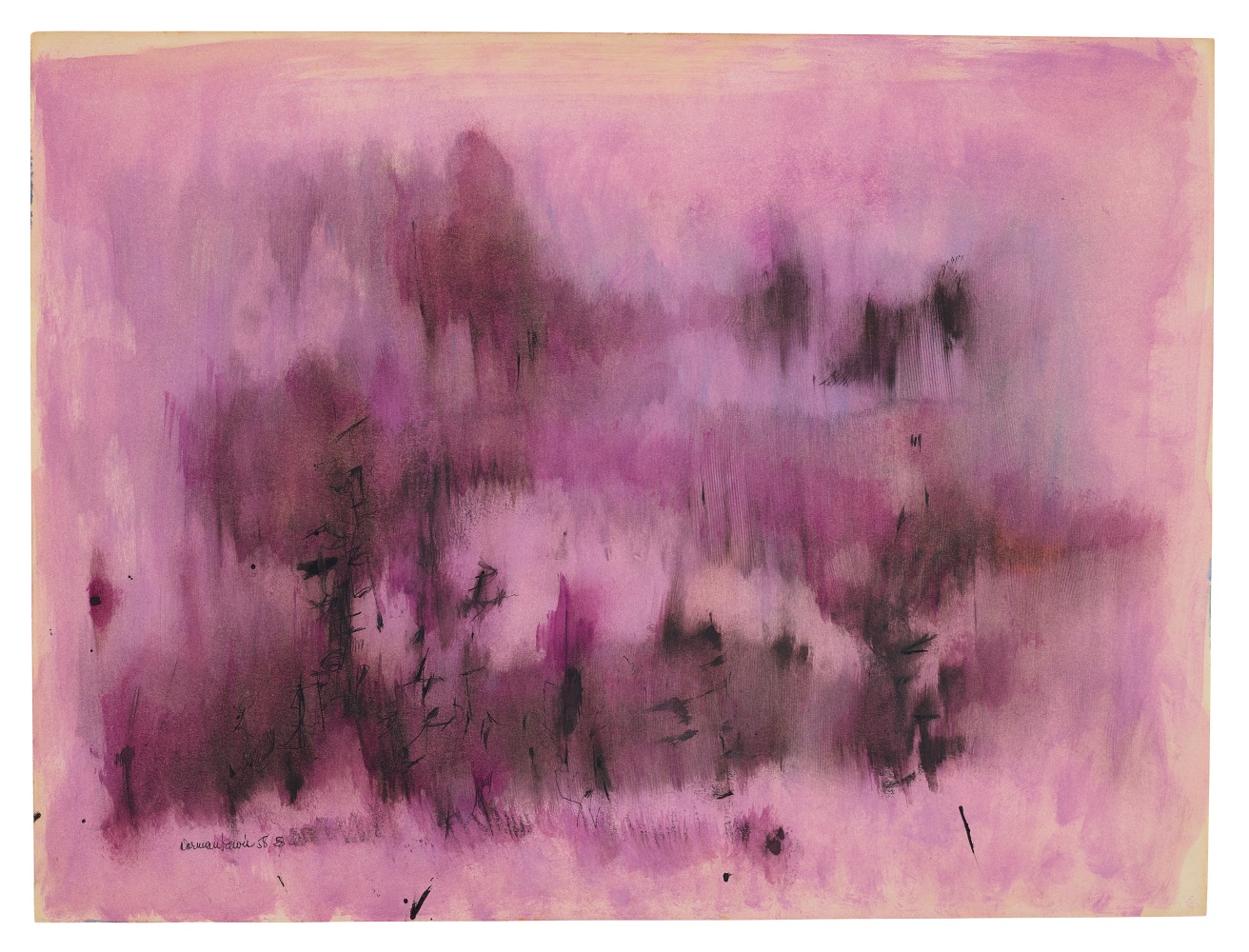Norman Lewis
Untitled (Study in Magenta), 1958
Norman Lewis
“… the goal of the artist must be aesthetic development, and in a universal sense, to make in his own way some contribution to culture.”
- NORMAN LEWIS

Norman Lewis working on Composition I, 1945. Courtesy Willard Gallery Archives.
Norman Lewis is one of those rare painters who found the ability to almost seamlessly move between figuration and abstraction. Early in his career, primarily in the 1930s, Lewis worked in a social realist style, which was the dominant mode of expression at that time thanks in large part to the employment by many artists in the government-funded Works Progress Administration. During this decade, Lewis focused his figurative subjects on the struggles faced by himself and the wider Black community, including police brutality. His left-wing politics brought him into the wider circle of notable Abstract Expressionist artists such as Ad Reinhardt. He was involved in the group firmly enough to be the only person of color present at the 1950 symposium at Studio 35 in New York, where the leading Abstract Expressionist artists of the day coined the now famous term. In part through these introductions, Lewis moved towards abstraction beginning in the mid-1940s.
By the year 1958, when Untitled (Study in Magenta) was executed, Lewis was planted firmly in the non-figurative camp, although in all of his abstract paintings—the present work included—one can see how his earlier styles influenced his later work. As the title implies, Untitled (Study in Magenta) playfully explores variations of his chosen magenta ground; deeper and richer tones of purple are layered on top of one another, with just a hint of the paper support poking through at the edges. As a final flourish, short strokes of black ink are dispersed throughout the composition, clustered particularly in the darkest portions and providing a sense of figurative movement. These fluid, calligraphic forms that suggest groups of figures in kinetic motion have become iconic staples of his abstract works.

Norman Lewis with his abstract art, ca. 1950. Courtesy Estate of Norman W. Lewis.
In these sections of the composition, viewers begin to see the distinct importance line played in Lewis’s output. In Untitled (Study in Magenta), line and field work in tandem, and the drawing becomes an attempt to dissolve the boundaries between figuration and abstraction. Indeed, Lewis moved towards abstraction not as a direct rejection of figuration, but out of a need to embrace the qualities of all types of art making practices. Especially during an era when artists of color were expected to create works that spoke plainly and directly to their experiences, it was a daring and important change for Lewis to explore abstraction’s possibilities.
By the time Untitled (Study in Magenta) was completed, Lewis was riding on the heels of a decade filled with noteworthy career successes. In 1955, he was the first Black man to be awarded the prestigious Carnegie International Award in Painting, and in 1956 he was selected to participate in “American Artists Paint the City,” an exhibition of 46 works by 36 artists in the American Pavilion of the 28th Venice Biennale. While he never received the same critical or monetary successes as his fellow Abstract Expressionists during his lifetime, Untitled (Study in Magenta) is indicative of all of the elements that have propelled the art world to reassess his legacy, placing him back into the level of prominence to which he belongs.
“It is discovering what one can do in paint, what one can achieve, what visually excites you, and what you want to see that hasn’t been done, you know?”
- NORMAN LEWIS

